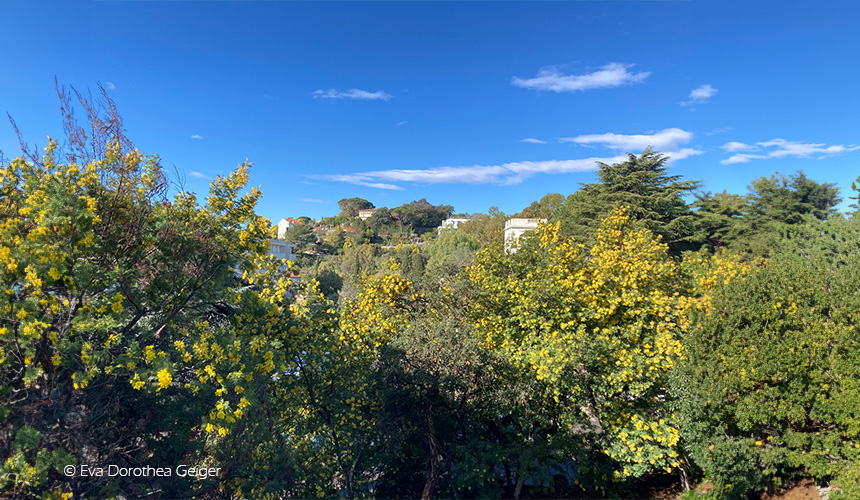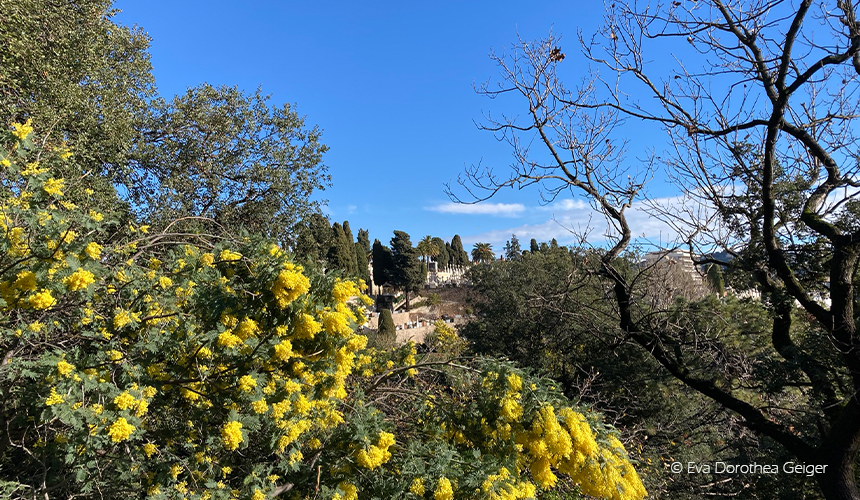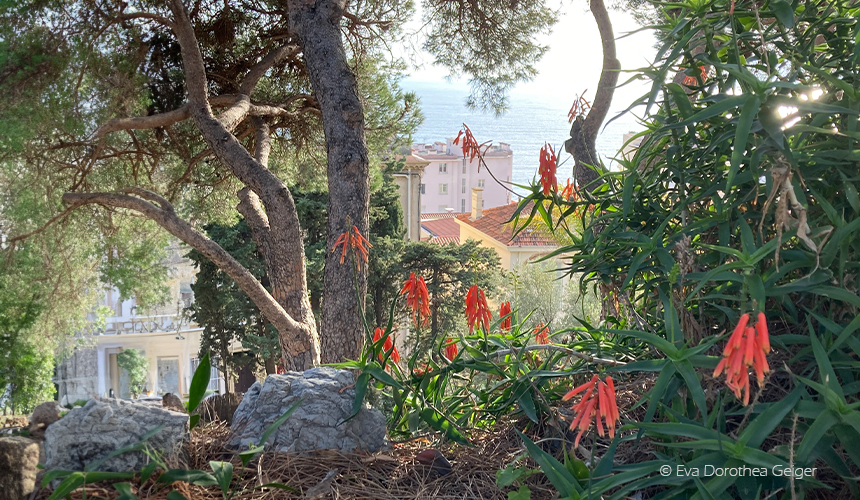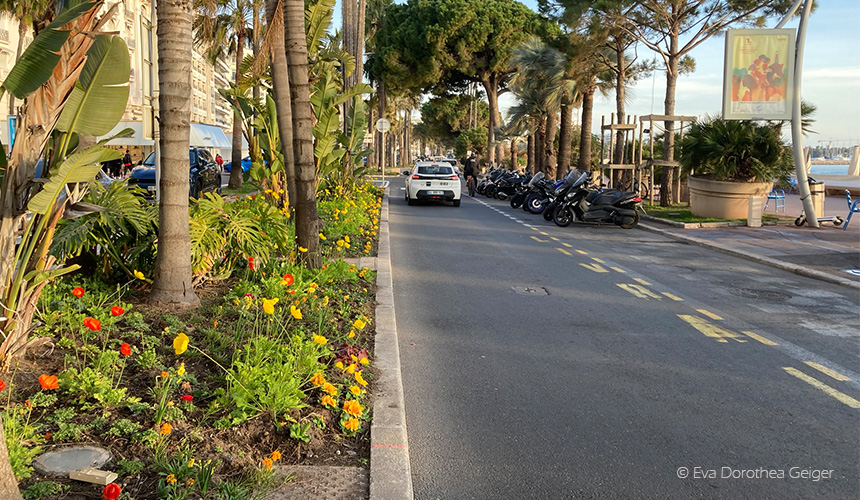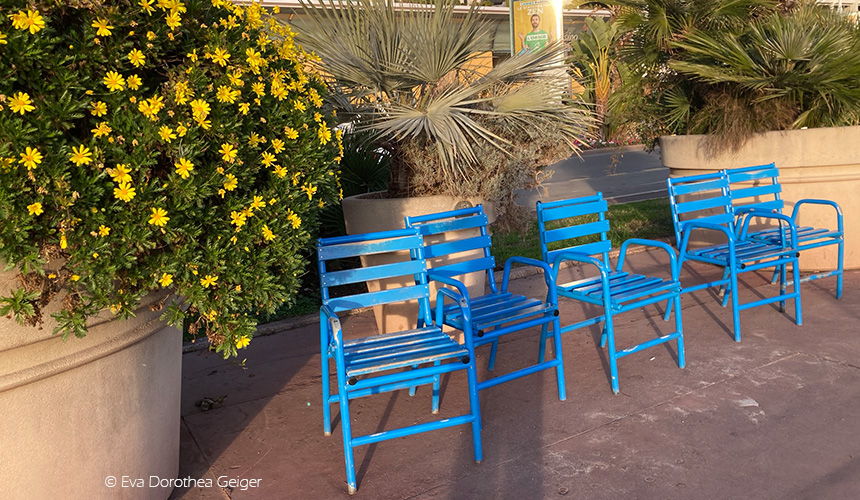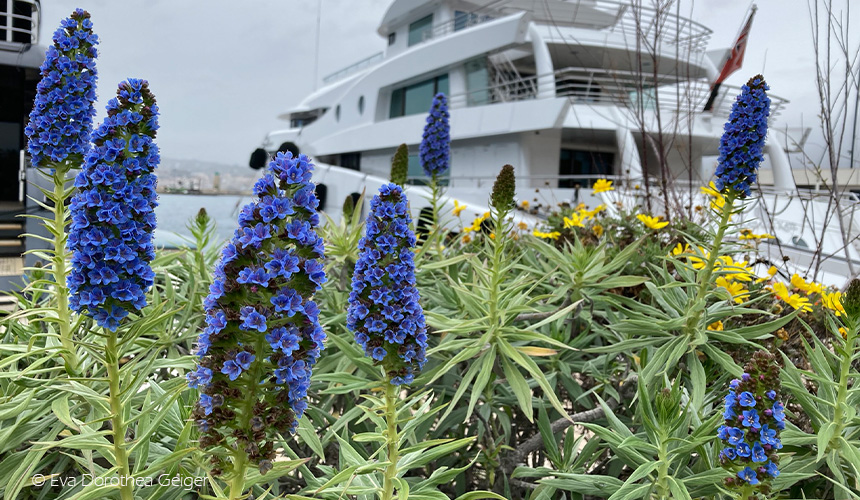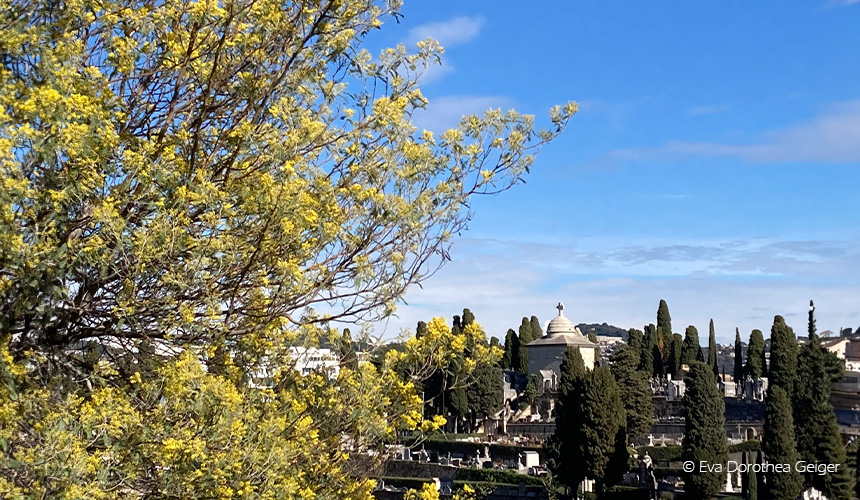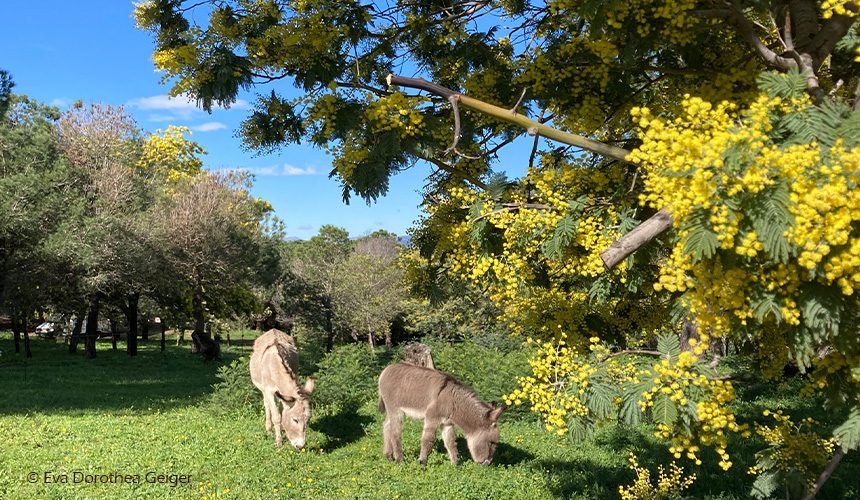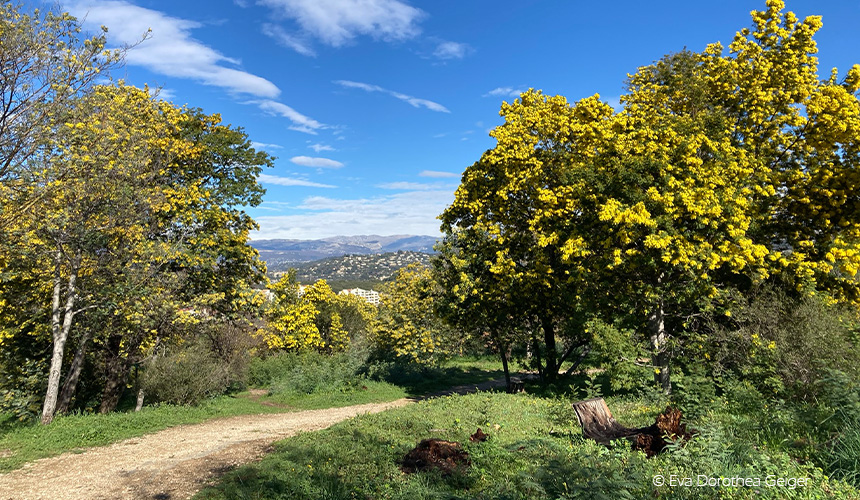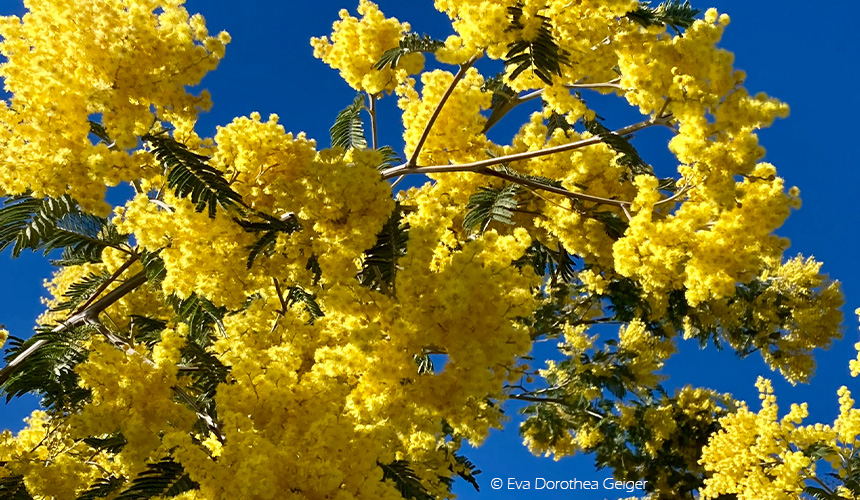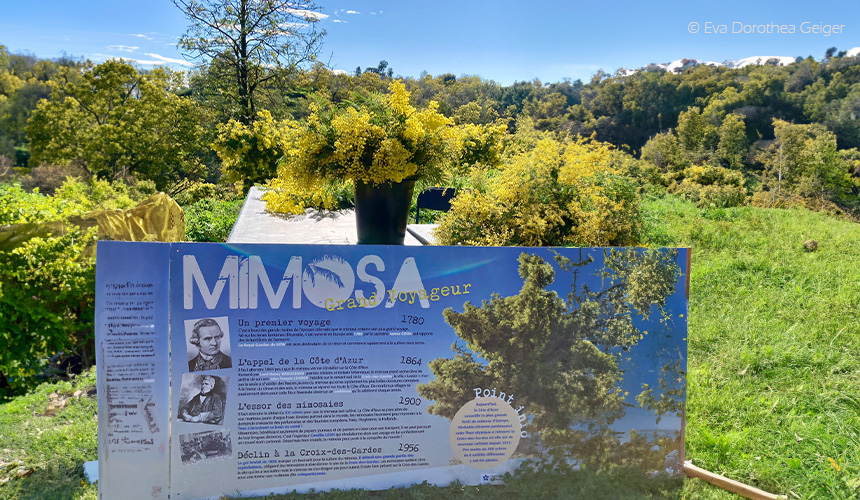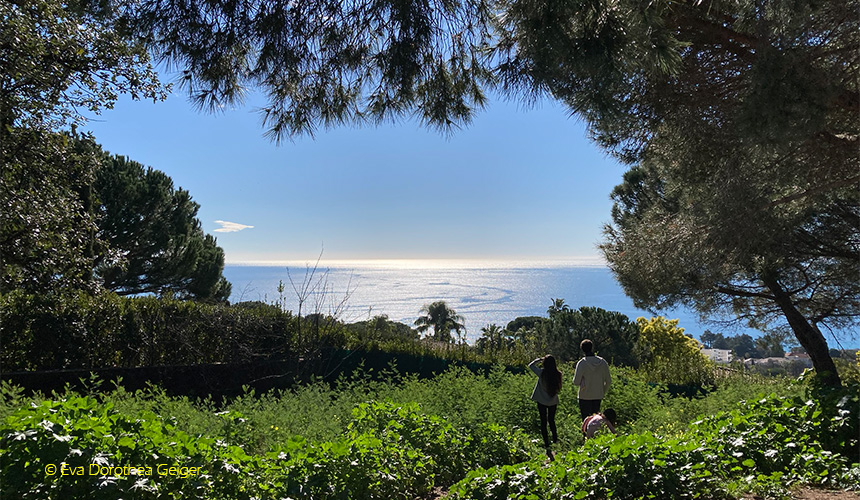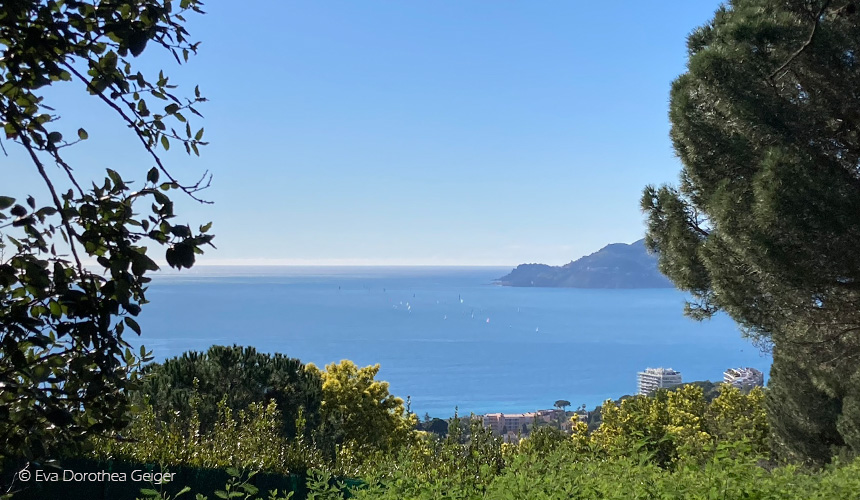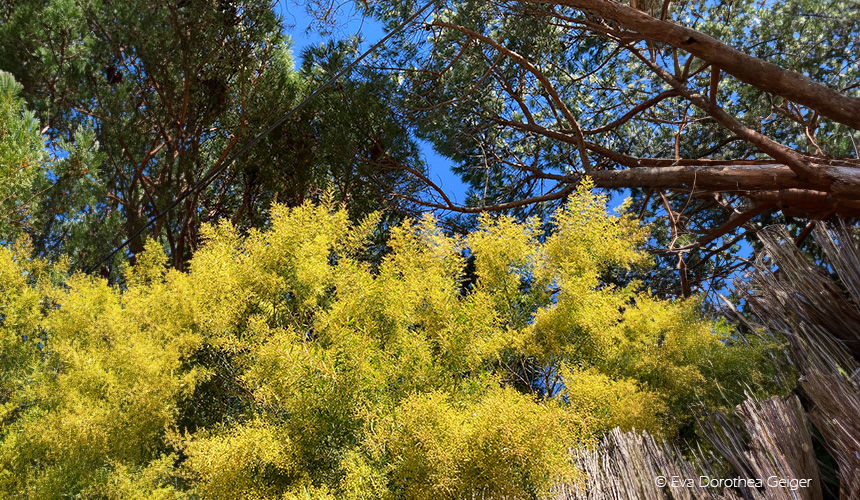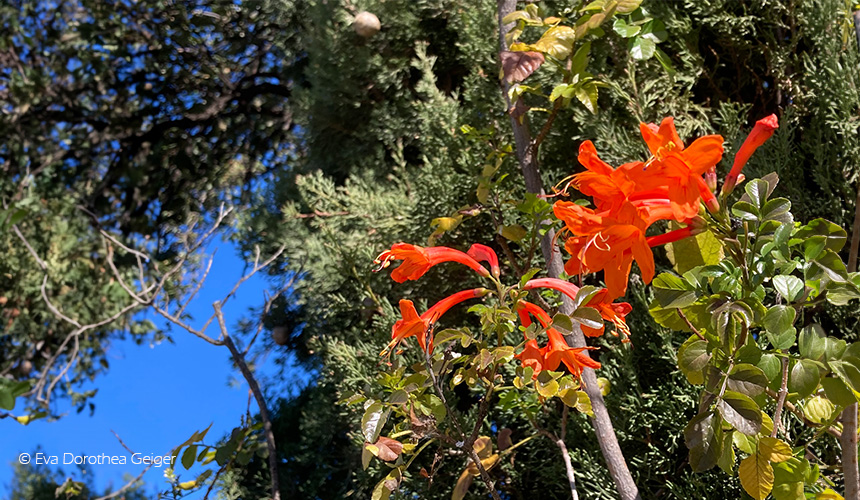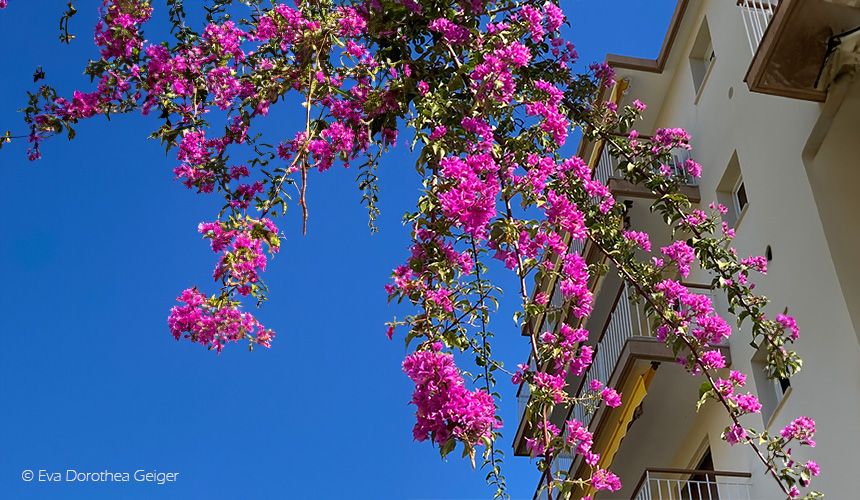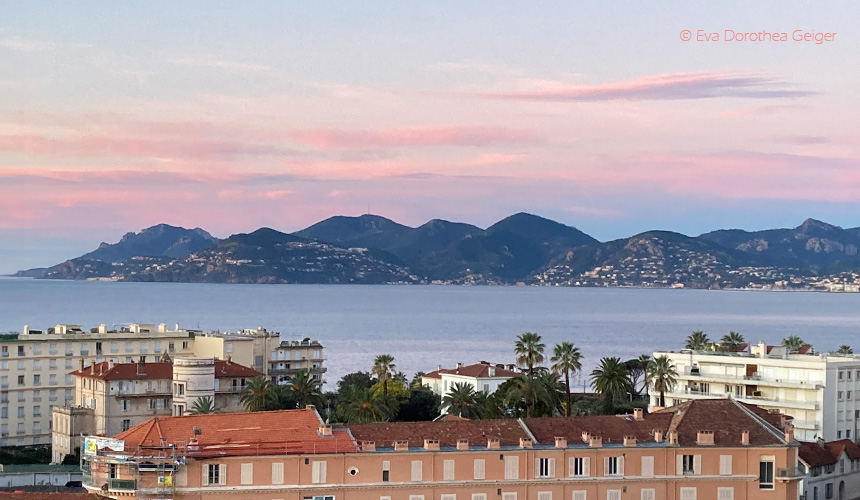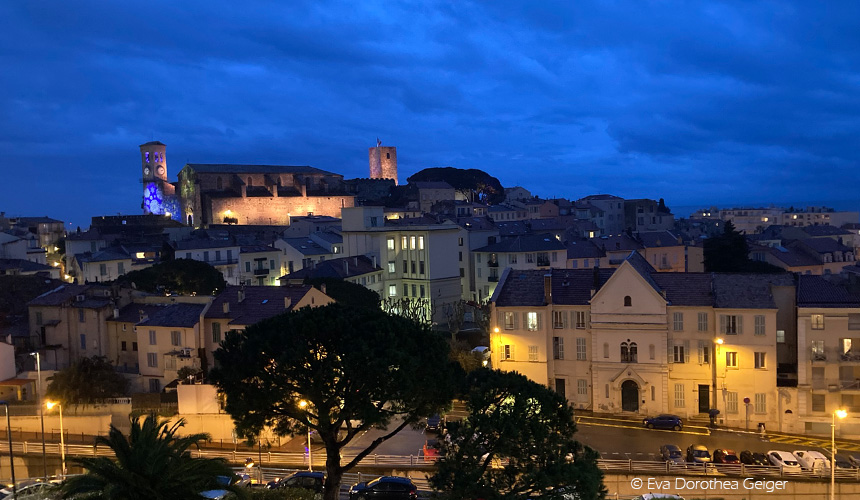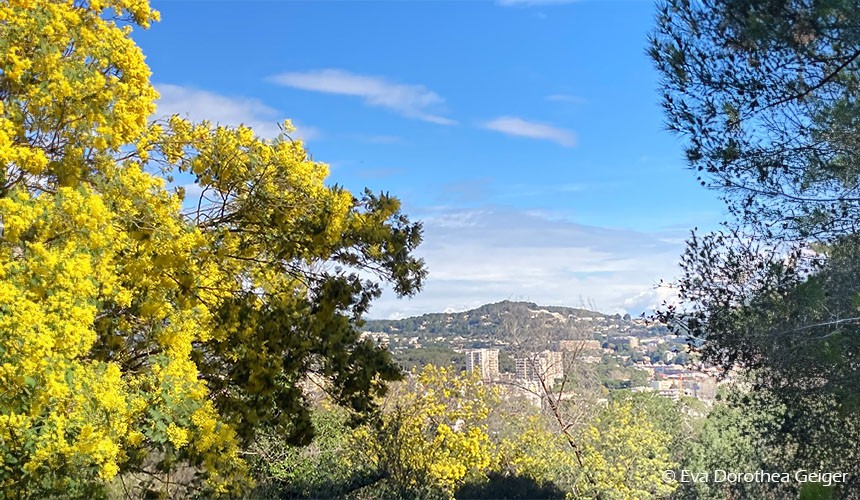
If you are longing for warmth, the sea and a spring awakening after the dark and cold winter months here, then the time is ripe for the Côte d'Azur. After the mild winters, in spring on the Côte d'Azur nature comes to life along the coast and a variety of flowers begin to bloom to fill the landscape with color and fragrance.
One of the most notable blooms is the mimosa, which adorns the hills and valleys of the region with bright yellow flowers in February and March. Their sweet fragrance and radiant color transform the landscape into a true paradise.
Mimosa can also be shown in all its beauty in ikebana. For example in Shōka Nishu ike with tulips as nejime.
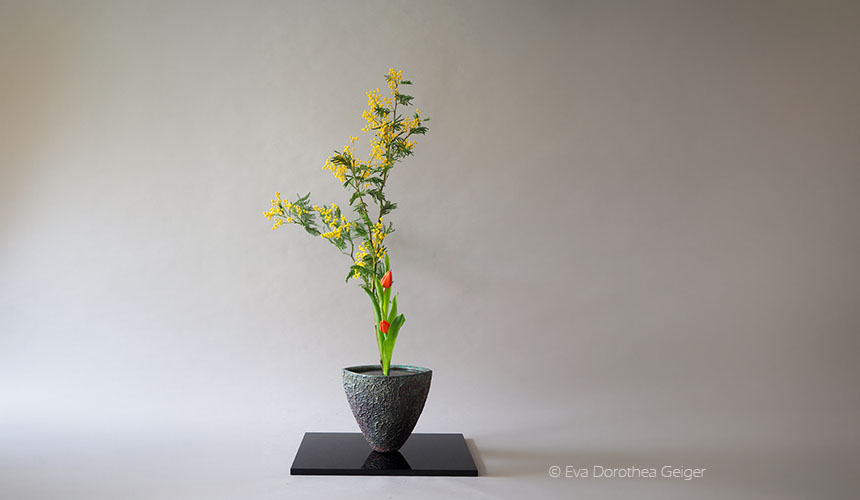
Well-traveled mimosa
Mimosa, also known as Acacias, is a genus of flowering plants belonging to the Fabaceae family. They originate from the temperate and tropical regions of Australia as well as some parts of Asia and Africa. Mimosas are known for their characteristic, often yellow flowers and fine, fern-like leaves. There are over 1,000 species of mimosa worldwide, many of which thrive in different climates.
1780 A first voyage
The mimosa embarked on its greatest voyage on the great ships of the colonial era. Born in distant Australia, it was brought to Europe around 1780 by Captain James Cook, who brought back samples from Tasmania. The Royal Garden in KEW received this treasure and soon began cultivating the mimosa in greenhouses.
1864 The call of the Côte d'Azur
It took until 1864 for the mimosa to establish itself on the Côte d'Azur. Lord Henry Brougham, the British Prime Minister and writer, brought the mimosa with him and planted it in the gardens of his friend John Temple Leader. The "Leader" villa on the southern slope of the Croix-des-Garde was not the only villa to be adorned with the yellow flakes of the mimosa, which soon adorned the most beautiful houses in Cannes. Due to the climate and soil conditions, the mimosa spread throughout the Côte d'Azur. Many villages became enthusiastic about the winter flower, which became a symbol that they celebrated every year.
1900 The rise of mimosaia
It was not until the beginning of the 20th century that the mimosa was cultivated. The Côte d'Azur then adorned itself with its yellow mantle every winter. The mimosa blossomed to meet the growing demand from European perfumeries and florists. Paris, England, Holland... Everyone is clamoring for this piece of sunshine! However, as it is only transported in newspaper and wicker baskets, it cannot travel very far. The engineer Camille Léon revolutionized the journey by creating a new wickerwork box. Now the mimosa can conquer the world.
Due to the mild climate, the mimosa has conquered the Côte d'Azur and shows its breathtaking natural spectacle in February. The picturesque city of Cannes, known for its glamorous film festival and luxurious ambience, is flooded with the lush bloom of mimosa trees in February.
Along the coastal roads and in the surrounding hills, the mimosa trees begin to bloom towards the end of winter and reach their peak in February. The bright yellow flowers, which hang in dense clusters from the branches, lend the region an enchanting atmosphere and a beguiling scent and create a picturesque backdrop along the coastal roads and in the rolling hills. This natural spectacle marks the transition from winter to spring and is eagerly awaited by locals and visitors alike. The mimosa blossom is not only a visual feast for the senses, but also a symbol of hope, renewal and the start of a new season.
Mimosa plays an important role in perfumery and horticulture and its flowers are used in various products and thus also play an important role in the local economy, especially in perfumery and horticulture. The fragrance industry uses the sweet, floral scent of the mimosa flower in a variety of perfumes and essential oils, while the flowers themselves are used in ornate arrangements and decorations.
A variety of Mediterranean plants and flowers also bloom along the Côte d'Azur in spring, including the Cape funnel flower (Texomaria capensis), Cape honeysuckle, Veronica spicata blue or silk poppies, bougainvillea, oleander and eucalyptus. They adorn the gardens, parks and streets and attract not only tourists, but also artists and photographers. During spring, numerous festivals and events take place along the Côte d'Azur to celebrate the splendor of the flowers. From flower markets to garden festivals, there are numerous opportunities to admire the diversity and beauty of the region's flowers.
Another way to work with mimosa in ikebana is a Shōka Shimpūtai. In this arrangement, the mimosa unfolds a magic through its restraint and yet is very present to support its partners the shu (anemone) and yo (barberry).
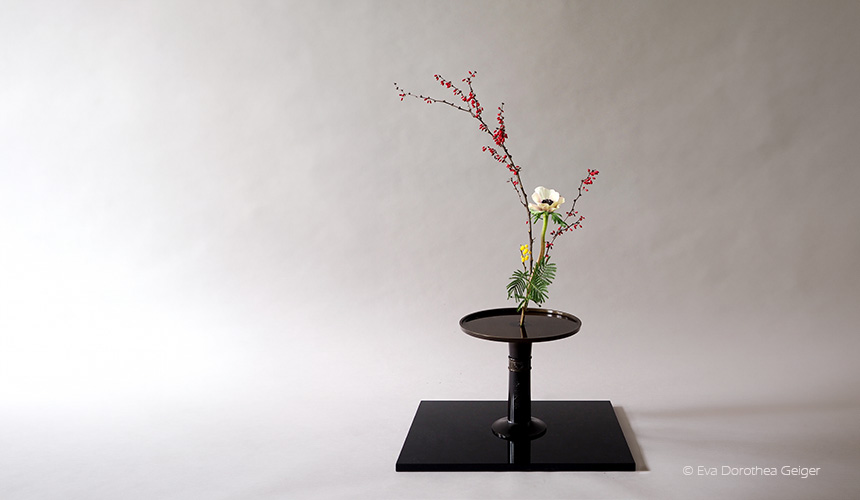
The mimosa also does a good job in the Jiyūka with anemone, holly, pine and waxflower, arranged very discreetly and deeply,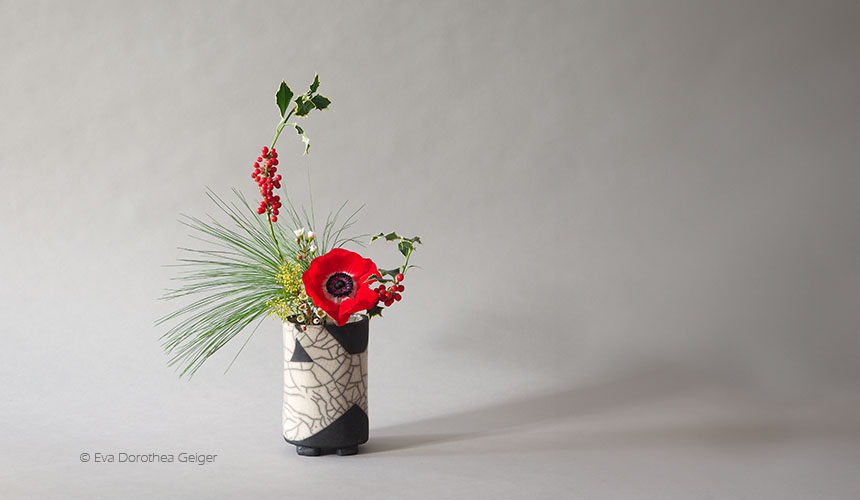
or in a very modern way in a Jiyūka combination with shrill, blue-colored irises and pink eustoma.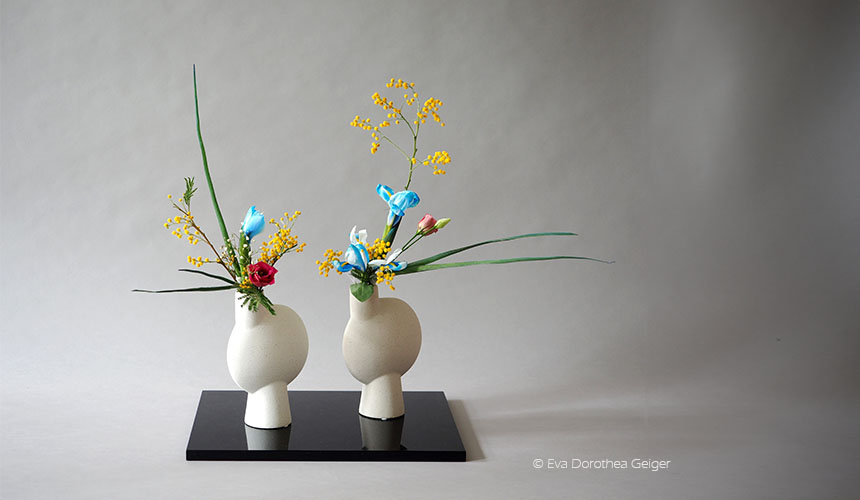
Unfortunately, the yellow mimosa clouds don't last long, but even when dry they remain fragrant for quite a while.
